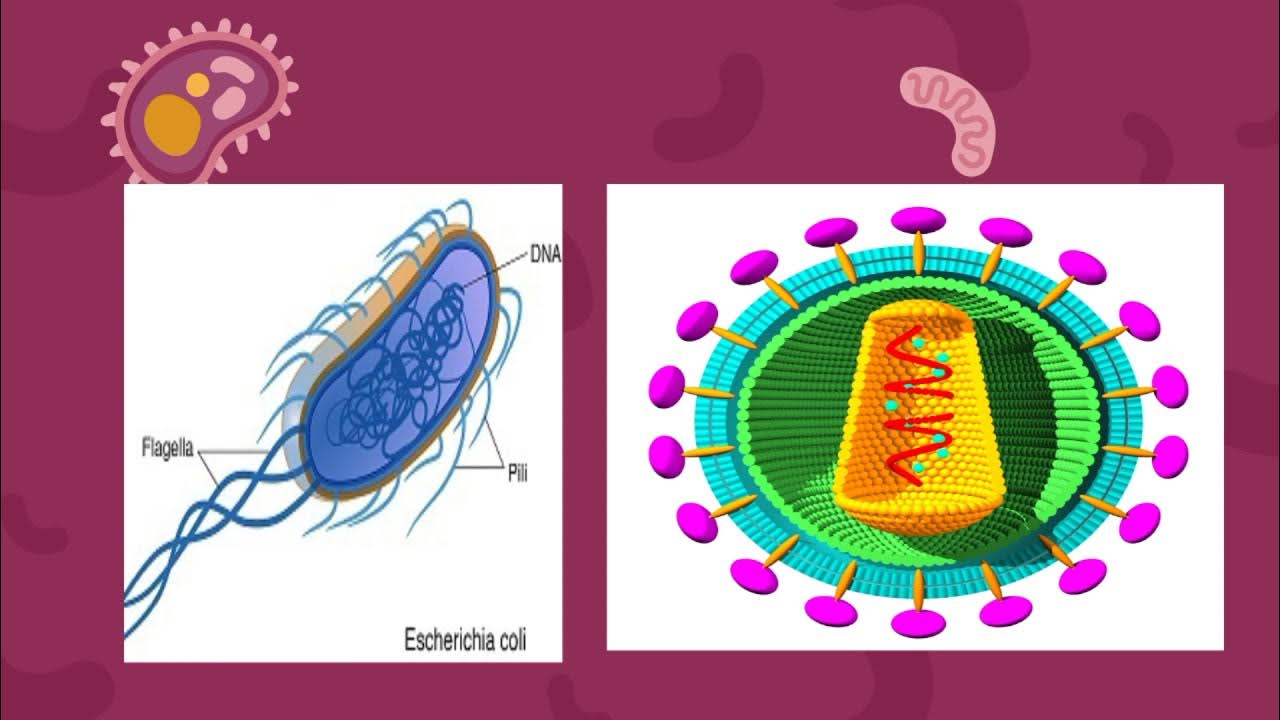Genetic imprinting B.sc Zoology 5th Semester||Molecular Biology||Core-XI ||#GENETICIMPRINTING
Summary
TLDRThis video lecture provides a comprehensive explanation of genetic imprinting, focusing on its role in regulating gene expression. The instructor explains how genetic traits, such as height, are typically inherited from both parents, but imprinting causes only one allele (either maternal or paternal) to be expressed. The concept of maternal and paternal imprinting is explored, with examples of how epigenetic modifications like methylation influence gene expression. The lecture also highlights how imprinting-specific regions on chromosomes determine which alleles are expressed, leading to distinct expressions in offspring based on the parental source of the gene.
Takeaways
- 😀 Genetic imprinting refers to a process where the expression of certain genes is controlled by parental origin, leading to parent-specific gene expression.
- 😀 Imprinting is similar to stamping or marking genes to ensure that only one parent's version of the gene is expressed in the offspring.
- 😀 In normal Mendelian genetics, both alleles (from mother and father) contribute equally to the traits, but genetic imprinting alters this by controlling which allele gets expressed.
- 😀 Genetic imprinting is species-specific, meaning the process differs among species, and its effects can vary based on which parent the gene comes from.
- 😀 In cases of genetic imprinting, one allele might be ‘turned off’ (imprinted) and not expressed, while the other allele takes over, regardless of whether it’s dominant or recessive.
- 😀 If the paternal allele is imprinted, the offspring will only express the maternal version of the gene, and vice versa for maternal imprinting.
- 😀 Examples of genetic imprinting include conditions like Prader-Willi syndrome and Angelman syndrome, where the symptoms can vary based on which parent's allele is imprinted.
- 😀 The process of genetic imprinting involves epigenetic modifications like histone modification, DNA methylation, and chromatin remodeling, which can prevent or promote gene expression.
- 😀 Genetic imprinting can lead to unexpected phenotypes in cases where dominant or recessive genes behave differently due to imprinting control.
- 😀 The expression of imprinted genes is controlled by a region on the chromosome called the Imprinting Control Region (ICR), which determines whether a gene from a specific parent will be expressed or not.
Q & A
What is genetic imprinting?
-Genetic imprinting is a process where the expression of certain genes is controlled by the parent from which they are inherited. The expression of these genes may vary depending on whether they are inherited from the mother or the father.
How does genetic imprinting differ from Mendelian genetics?
-In Mendelian genetics, both alleles from the father and mother contribute equally to the expression of a trait, with dominant alleles typically being expressed over recessive ones. However, in genetic imprinting, the gene's expression depends on which parent's allele is inherited, even if both alleles are technically dominant or recessive.
What is the role of imprinting in gene expression?
-Imprinting controls which allele is expressed by modifying the gene's expression through epigenetic changes, such as DNA methylation. This means that even if two alleles are identical, one may be silenced depending on its parental origin.
What are the two types of genetic imprinting discussed in the transcript?
-The two types of genetic imprinting discussed are maternal imprinting and paternal imprinting. Maternal imprinting refers to when the gene inherited from the mother is expressed, while paternal imprinting refers to the expression of the gene inherited from the father.
Can you explain the concept of 'epigenetic modification' in genetic imprinting?
-Epigenetic modification refers to changes in gene expression that are not caused by alterations in the DNA sequence itself. This includes processes like DNA methylation or histone modification, which can silence certain genes depending on the parent of origin.
What happens when a gene undergoes genetic imprinting?
-When a gene undergoes genetic imprinting, one of the alleles, whether from the mother or father, is silenced and does not get expressed, while the other allele is the one that dictates the phenotype.
What is an example of a gene that shows paternal imprinting?
-An example of paternal imprinting is the Insulin Growth Factor (IGF) gene, where the gene's expression is determined by the paternal allele, even if the maternal allele is different.
Why are genetic imprinting patterns species-specific?
-Genetic imprinting patterns are species-specific because different species have evolved unique ways of regulating the expression of imprinted genes, which can affect traits and disorders in different ways across species.
How does histone modification contribute to genetic imprinting?
-Histone modification, which is part of the epigenetic process, can make the DNA more or less accessible for transcription. In the case of genetic imprinting, this can lead to silencing of one allele, depending on whether the gene is inherited from the mother or father.
What is the role of the Imprinting Control Region (ICR) in genetic imprinting?
-The Imprinting Control Region (ICR) is a part of the chromosome that regulates which allele, whether from the mother or father, will be imprinted and therefore expressed. This region plays a crucial role in ensuring that the correct parental allele is silenced or expressed.
Outlines

This section is available to paid users only. Please upgrade to access this part.
Upgrade NowMindmap

This section is available to paid users only. Please upgrade to access this part.
Upgrade NowKeywords

This section is available to paid users only. Please upgrade to access this part.
Upgrade NowHighlights

This section is available to paid users only. Please upgrade to access this part.
Upgrade NowTranscripts

This section is available to paid users only. Please upgrade to access this part.
Upgrade Now5.0 / 5 (0 votes)





